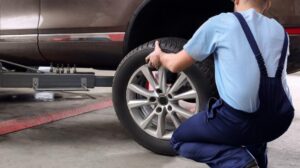Learn how to troubleshoot a slow start in cold weather with our comprehensive guide. Discover common causes and solutions to ensure your car starts smoothly even in the cold.
What You Will Learn:
- Reasons for slow starter cranking in cold weather
- How to fix cold start problems
- Why stop-start systems may not work in cold conditions
- Whether a starter can be too cold to function
Why is My Starter Slow Cranking When It’s Cold?
Cold weather can significantly impact your car’s starting performance. Here are some reasons why your starter might crank slowly:
- Battery Performance:
- Reduced Efficiency: Cold temperatures reduce the battery’s chemical reactions, lowering its ability to hold and deliver charge.
- Increased Load: Cold oil and other fluids create more resistance, requiring more power to start the engine.
- Thickened Oil:
- Viscosity Increase: Cold temperatures cause engine oil to thicken, making it harder for the engine to turn over.
- Electrical Issues:
- Corroded Connections: Cold weather can exacerbate existing corrosion on battery terminals and cables, hindering electrical flow.
How Do You Fix a Cold Start Problem?
Fixing cold start issues involves several steps:
- Battery Maintenance:
- Test and Replace: Ensure the battery is in good condition and fully charged. Consider replacing an old or weak battery.
- Insulate the Battery: Use a battery blanket or insulator to keep it warm.
- Use the Correct Oil:
- Winter-Grade Oil: Switch to a lower viscosity oil suitable for cold temperatures to reduce resistance during startup.
- Check Electrical Connections:
- Clean Terminals: Ensure battery terminals and connections are clean and secure.
- Use a Block Heater: A block heater can warm the engine and oil, making starts easier.
- Professional Diagnostics:
- For a thorough inspection, consider using Auto Query and Auto Query Pro.
Why is My Stop-Start Not Working in the Cold?
Stop-start systems may not work in cold weather due to:
- Battery Protection:
- Battery Conservation: The system may deactivate to preserve battery charge, which is critical in cold temperatures.
- System Parameters:
- Temperature Thresholds: The system may have built-in thresholds to prevent activation in extreme cold to ensure reliable restarts.
- Engine Conditions:
- Optimal Temperature: The engine needs to reach a certain temperature to function efficiently, which may not be achievable in extreme cold.
Can a Starter Be Too Cold to Start?
In extreme cold conditions, a starter can indeed struggle to function:
- Lubrication Issues:
- Thickened Grease: Grease inside the starter motor can thicken, increasing resistance and reducing efficiency.
- Electrical Resistance:
- Increased Resistance: Cold temperatures increase electrical resistance, making it harder for the starter to draw sufficient current.
- Mechanical Strain:
- Stiff Components: Metal parts contract in cold weather, potentially causing mechanical strain and hindering movement.
By understanding these factors and applying the suggested fixes, you can improve your car’s performance in cold weather and ensure reliable starts even in the harshest conditions.



